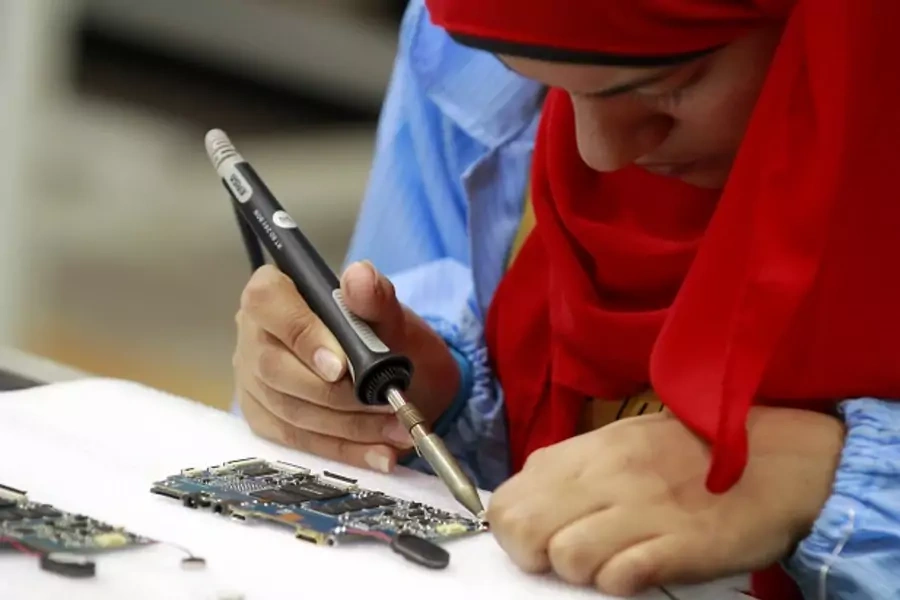Hacking the Gender Gap: Why the Tech Industry Needs More Women

This post is by Becky Allen, a research associate for the Women and Foreign Policy program at the Council on Foreign Relations.
As evidenced by the Goldman Sachs 10,000 Women program, the Tory Burch Foundation’s Fellows Competition, and the Vital Voices’ VV Grow Fellowship, among other initiatives, there is increasing private sector investment in women’s entrepreneurship training. And it’s about time more organizations and governments follow suit.
More on:
We already know that advancing the status of women has a resounding impact on the global development agenda. Countries with greater gender equality see improved health and educational outcomes, as well as more peaceful societies. The connection between women’s economic participation and growth in particular is compelling: a recent McKinsey Global Institute report found that minimizing the gender gap in labor force participation holds the potential to add $12 trillion to global GDP by 2025.
In the past few years, research has also shed light on the role that female entrepreneurship plays in driving the global economy forward. Women own an estimated 8 to 10 million small and medium-sized enterprises (SMEs) in emerging markets, where SMEs contribute to more than 50 percent of total employment. However, female-owned SMEs face a financing gap of $285 billion, stymieing their growth. Imagine the economic transformation we would see if we closed this financing gap – evidence suggests it would catalyze job creation and drive GDP growth. But would this transformation also have a lasting impact on gender equality?
The recently released 2016 Future of Jobs report suggests that the picture may be more complicated. Female entrepreneurship and labor force participation are competing with the technological revolution. "Disruptive technology," such as artificial intelligence, robotics, big data analytics, and the mobile internet, is expected to replace 7.1 million jobs by 2020 – the majority of which are in female-dominated sectors including office and administrative work; manufacturing and production; and art, design, entertainment, sports, and media. Meanwhile, the top three sectors with anticipated growth are business and financial operations, management, and computer science and mathematics – job arenas typically dominated by men. This data would suggest potential for regressive trends in women’s economic participation.
However, there is a possible solution: if female entrepreneurship training programs encouraged women to start businesses in the tech field, perhaps it would continue to advance gender equality. Not only would this create more jobs in a sector of anticipated growth, but it may also have a domino effect on women in tech, facilitating the employment of increasing numbers of women in STEM careers.
How would this work?
More on:
First, women need other female role models and mentors in their field. Seeing women in STEM careers would encourage the recruitment and retention of additional women to such positions – whether as an employee in a female-owned SME or a larger corporation. Studies show that interactions with female STEM professors shift gendered stereotypes of STEM fields, encouraging women to identify such fields as more feminine than masculine. From this, it can be extrapolated that increased numbers of women would be attracted to STEM careers if they developed role models in those fields. Likewise, a study by researcher Yu Xie suggests that choice of role models is related to gender and therefore, "when women become successful in a field, the next generation of women is more likely to emulate their success."
Second, in a Harvard Business Review article, researchers concluded that having only one woman in a pool of candidates inhibits her ability to be selected for a job. In contrast, the more women in the pool of candidates, the greater the likelihood a female candidate would be hired. While this seems like straightforward statistics, it is actually about reinventing the norm. One female candidate stands out as being different and "different" is often associated with greater risk for decision makers. The greater the number of female candidates, the more "normal" it feels to have women in the room.
Lastly, it is crucial to return to the financing gap faced by female entrepreneurs. While advances in technology have the potential to reduce the $285 billion financing gap as more people turn to mobile banking, a Goldman Sachs study points out that men often adapt faster to new technologies than women do. If investors and governments specifically sought to finance female-owned tech SMEs, the impact would be twofold: more women would be encouraged to join the tech field, and those women might be more sensitive to the needs of other women when devising new tech products and services.
We need more female-owned tech SMEs to increase female role models in the field; to train women in this sector, so as to increase the pool of female candidates in STEM; and to develop gender-sensitive technologies. Otherwise, fields dominated by men will continue to grow, while those dominated by women will continue to shrink. If we do not encourage female entrepreneurship, specifically in the tech sector, women around the world will remain a vastly untapped resource in the twenty-first century economy.
 Online Store
Online Store